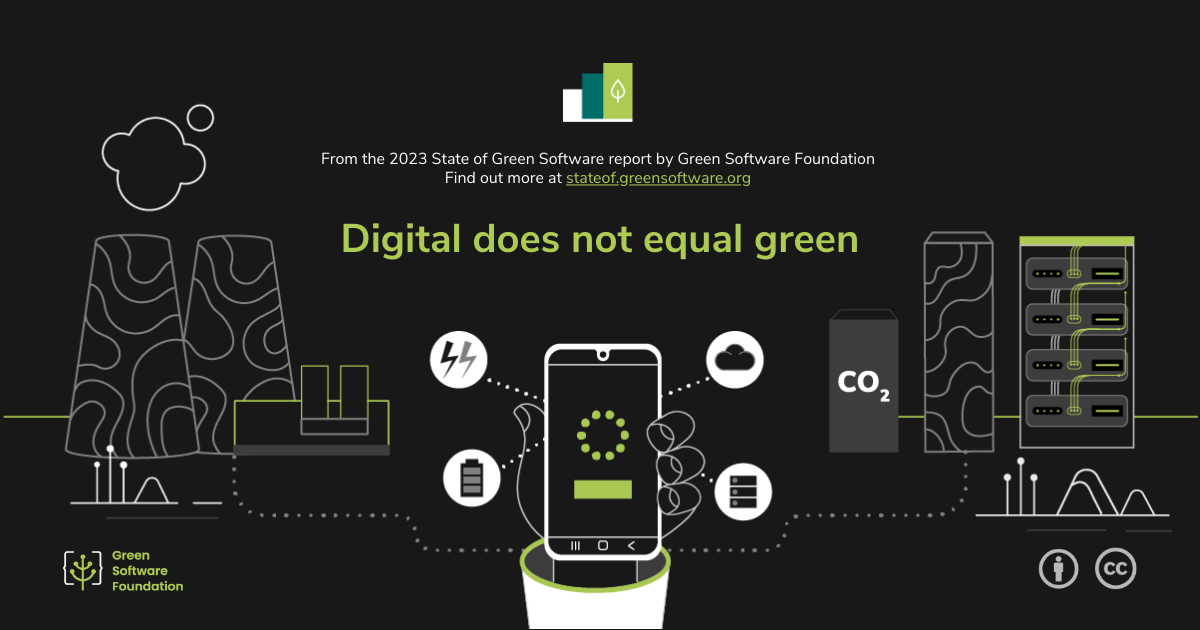Digital does not equal green
Software directly contributes to CO2 emissions shaping atmospheric changes and extreme weather events related to global warming. The cloud alone has a larger carbon footprint than the airline industry, increasing by 9% YOY. Beyond CO2 emissions, software has a range of environmental impacts, from water used for manufacturing or server cooling to land use for data centers.
Digital transformation has the potential to mitigate climate impacts. Data suggests virtual/remote work reduces emissions when commuting decreases, and global in-person conferences that turn virtual reduce an event’s carbon footprint by 94% and energy use by 90%.” But digital communication can negatively impact the environment and contribute to climate pollution. For instance, remote work can reduce global emissions but has also shown to increase the number of video meetings, which have profound environmental implications; for every 60 minutes of streaming or video, a user consumes 12 liters of water and emits up to 1000 grams of CO2 into the atmosphere. Similarly, remote work raises home-based energy costs—depending on local energy infrastructures, the season, and the geographic location of employees—and the potential for more e-waste as employees purchase additional laptops and other hardware.
Every digital transaction needs energy, physical infrastructure, and a device to run. Digital infrastructures rely on manufacturing raw materials, transporting goods, maintaining goods and services, and dumping, recycling, or repairing and reusing goods. The social impact of software is also an important sustainability indicator. The social impact of software starts with device manufacturing and can include exploitative cobalt mining practices and dismal factory conditions. When software limits the lifecycle of a device, it also contributes to increased device churn and electronic waste, much of which pollutes countries in the Global South, disproportionately impacting already poverty-stricken and marginalized populations.
If digital transactions and solutions rely on carbon-emitting energy sources or are exploitative of people or the planet’s natural resources, one can argue that the software and systems responsible are unsustainable and harmful. What is now clear is that being digital or digitizing products and services doesn’t necessarily equate to being green or guaranteeing greener outcomes. To ensure software is green, technologists must consider the end-to-end impact of their digital solutions.
